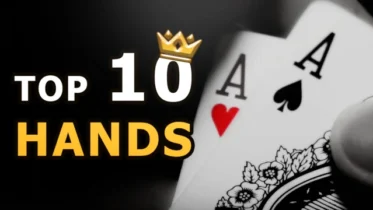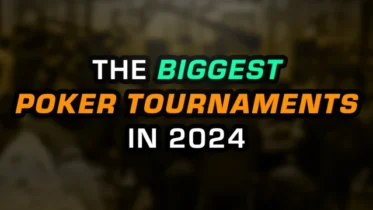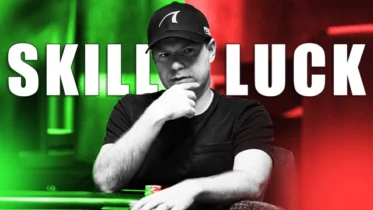Here’s another great topic gleaned from the PokerCoaching Discord server. It started innocently enough with a hand from a regular poster named Kevin. Here’s a link to the entire thread if you want it, but I hope this piece will give you a good summary of the discussion. Kevin found himself in a bluff catching spot on the river of a no-limit hold’em game. He was worried that a winning regular player (“reg”) was bluffing him, and felt that he had to call “sometimes.”
What he said exactly was, “I don’t know exactly why, but I feel compelled to flick in the call, because we have to call sometimes or we get run over.”
This is a common concern for a lot of poker players – we fear getting bluffed out of a pot. But let’s look at the math of the situation, because that, not fear, should drive our decisions.
If they move an inch, we move a mile
I wish I could take credit for that line, but I learned it from former poker theorist Nate Meyvis. I say “former,” because Nate has left the poker world to pursue other interests. Nate, poker misses you.
Here’s a simple explanation of what Nate means, courtesy of Andrew Brokos, and his excellent book, Play Optimal Poker. Suppose you owe a poker buddy $100, and would like to avoid them for a little while so you don’t have to pay them back yet. Each day you go to play poker, at either Casino Alpha or Casino Beta. You know that your friend also plays poker at those two casinos, and chooses them by flipping a coin, so they have a 50% probability of being at each casino. What is your best (literally GTO) strategy for avoiding them? You should also flip a coin to choose between the two casinos – this will maximize your chances of missing your friend. If you flip a coin, there’s a 50% chance that you will see your friend, so your expected “loss” (having to pay back the $100) is $50.
But suppose you learn that your friend prefers the coffee at Casino Alpha, so has slightly altered their routine. They play at Casino Alpha with probability 0.52, and Casino Beta with probability 0.48. Note that now the GTO strategy for avoiding your friend is to always play at Casino Beta. Each time you play at Casino Beta, your expected loss is $48 – $2 less than you expected to lose when your friend had a “balanced” casino choice strategy. Note also that every time you show up at Casino Alpha, your expected loss is $52, $4 more than choosing Casino Beta.
So even though your friend made only a tiny change to their casino choice strategy, your correct response is to radically change your casino choice.
This is what Nate means by, “They move an inch, we move a mile.”
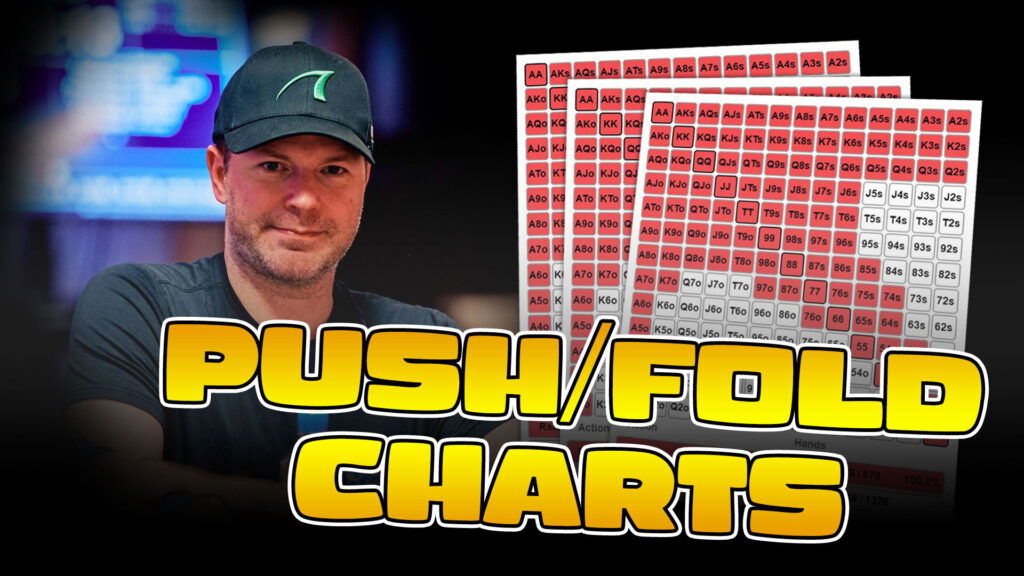
Make the best preflop decisions with Jonathan Little’s Push/Fold Charts!
Applying this to bluff catching
Some people in the thread were looking at the various bluffs the opponent might have and the features of Kevin’s hand as a bluff catcher. But PokerCoaching moderator Joey P, the MTT Hero, cut to the chase. Here is a minimally edited version of what he wrote:
You are complicating things a bit. Let’s work with a general assumption: In most games, the population does not bluff the river often enough to be “balanced.”
A balanced bluffing range is bluffing at the identical frequency of the pot odds.
The example I like to use is there is $100 in the pot and your opponent bets $100. Your pot odds are 2:1 and therefore their bluffs should be 2:1.
If he has 20 combos in his value range he is supposed to find ten bluff combinations. When you have a pure bluff catcher – i.e. a hand that never beats any hand in his value range, your EV is 0 to call versus a balanced range.
If instead he only bluffs nine instead of ten hands, then every bluff catcher that you call with, you are losing $100 21 times and winning $200 nine times, and your total EV is -$10 per call. Therefore, according to the pot odds math, you should never call with a bluff catcher if they are not bluffing often enough.
“You should never call with a bluff catcher if they are not bluffing often enough.“
–Joey P MTT Hero
Are they bluffing enough?
Note that in Brokos’ debt avoidance problem, if our friend has a balanced casino choice strategy (they flip a coin) then the best we can do is flip a coin. It’s only when they move off of equilibrium that we can exploit them. So it is trying to catch bluffs. If our opponent correctly balances their bluffs (e.g. bluffs exactly 1/3 of the time in the example above) then the best we can do is call them at Minimum Defense Frequency (“MDF”). MDF is the percentage of time we have to call to prevent our opponent from profiting by always bluffing.
But there’s great news…
99.999% of poker players under-bluff on the river.
While this runs counter to all the GTO discussion you hear these days, there is a constant refrain from the best thinkers in the business that the huge majority of poker players simply don’t find enough bluffs on the river to reach equilibrium.
Joey had more to say on this topic:
I used to advise the opposite. I would advise people to stay at GTO until they have evidence they are under-bluffing. However, upon listening to advice given to me by other coaches here, my experience, and checking my database, I have switched my advice on this spot. Here is a spot I think we can more profitably deviate from GTO until we find GTO is needed. To me, the better course of action in this type of spot is to exploit as the standard, and deviate back to GTO for certain players.
I suspect you can play a lot of poker before you find that unicorn who is bluffing at equilibrium. When you do, start calling at MDF, and drop me a note to tell me about it.
But until then, don’t think about what bluffs they might have, or the bluff catching properties of your hand. Like avoiding your coffee-connoiseur friend, simply never call, unless you can beat some of their value hands.
The emotional toll of folding bluff catchers
Does that mean that you never get bluffed? Absolutely not. In our “pot-size bet with 20 value hands,” if your opponent only finds nine of the ten appropriate bluffs, that means you get bluffed out of the pot nine times out of 30.
Humans – man, we don’t like getting bluffed. After all, you’re being lied to. When you call a value bet, you at least have the consolation of being told the truth. When you are successfully bluffed, it’s a double whammy – you were lied to, and because you believed the lie, you lost the pot. This can be tough on the psyche. That’s why it’s best to leave your psyche out of your poker decisions.
Look, even by exploiting your lender friend’s coffee preference, you still get caught 48% of the time and have to pay off your debt. 30% of the time in our example above, you get bluffed out of your shoes. But every time you fold, you are saving $10. Even the times where your opponent has absolute air.
So we have to be okay with getting bluffed – that is a part of the game, if we want to have a chance of winning. As Brokos likes to say, “The best poker players fold to bluffs quite often. Conversely, players who never fold to bluffs are always welcome at the poker table.”
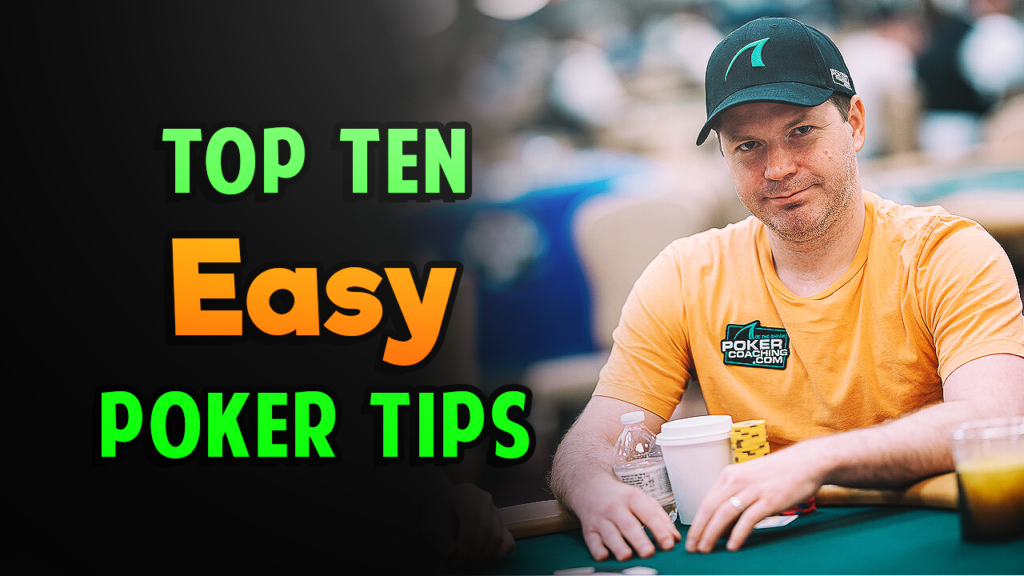
Crush cash games and poker tournaments with Jonathan Little’s Top Ten Poker Tips!
Losing the call button on the river
My poker results improved dramatically when I just stopped calling river bets unless I honestly felt I could beat some of my opponent’s value bets. If they bluffed me, good for them – I still profited by folding.
Joey P had this epiphany as well. Here’s how he described it:
Also, I have to report that, for the past month, when I returned to cash from only MTTs for a while, I have decided to never bluff catch on the river (unless I had enough hands for an accurate read for a maniac). Without ever bluff-catching, and finding the fold button 100% on the river with bluff catchers, my intermediate results are astonishing. I’m at 22BB/100 in the past month. So what I am telling you, I have actually put into practice and it is definitely working. All of that profit is because I am not giving some back with bluff-catching.
Neither Joey nor I can promise you 22BB/100. But the collective wisdom across the poker space is that our opponents are under-bluffing the river, relative to optimal frequency. And we can exploit them by simply folding.
You don’t have to be the sheriff
Kevin replied to Joey’s comments, thanking him for the detailed answers. But he wondered, “Another thing you said is that you would want evidence [that the bettor is a maniac], but if we never call how do we ever get it?”
I already had the answer ready for that one – I’ve been giving out this advice for years:
I’ve been preaching this for years. No matter what you think, people are not picking specifically on you. 90% of players will play identically against 90% of the field. Nobody made you town sheriff. So just watch and let the other players pay for your information.
Any time you find yourself in a spot where you think your opponent may be different from the average player, I’ve got a piece of advice:
Let the other people at the table pay for the information about how an unknown player behaves.
Of course, that means you need to be watching the table rather than scrolling Instagram when you’re not in hands. But let’s say that you suspect the #6 seat of bluffing too much. Sit back and watch for 45 minutes – I promise that such a player will reveal their true colors within that time period. You don’t have to spend your chips to get the information.
No, you don’t need to call “sometimes”
Andrew Brokos, who first taught me this whole “inch→mile” principle, is fond of saying: “Even against the GTO-perfect bluffing opponent, ‘I need to fold sometimes’ is just as true as, ‘I need to call sometimes,’ yet it is said so much less often.”
That’s because poker players want to call. They want to win the pot. They don’t want to be bluffed. Every emotional instinct in us wants to call in these river bluff catching spots. But the mathematics of poker have no bias whatsoever toward that – calling and folding are simply two choices, and the numbers guide us in one direction or the other. In the real poker world, that direction, almost always, is toward “fold.”
So there you go, Kevin – you don’t need to call sometimes. Just fold this time, and the next time too. You’ll get bluffed occasionally, but every time you fold, you’ll be printing money.
And thank you so much for bringing your hand to our Discord group. It was a great discussion, I learned some things, and I think others did as well. I look forward to your next post.

